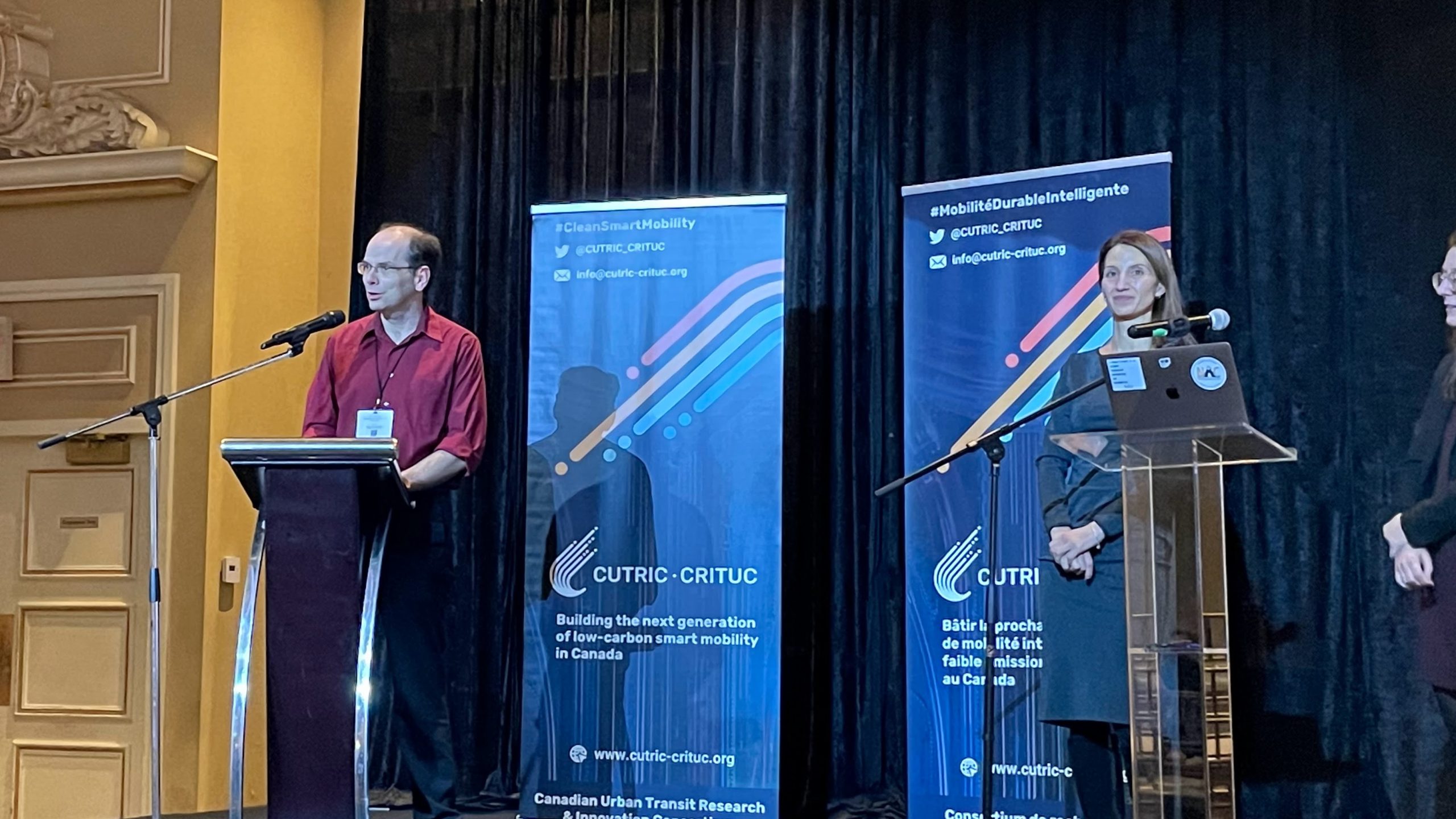
Transport Action and some of our volunteers have been participating in conferences and events with the Canadian Urban Transit Research and Innovation Consortium (CUTRIC) over the past few years, and we have now formalized this relationship by becoming a member organization of the consortium, in order to collaborate on their Smart Rail Innovation Program. One of the topics where our mandate complements the consortium’s work is hydrogen propulsion for passenger rail, and we will be working with CUTRIC toward getting that technology on the rails here in Canada.
The consortium held its Low Carbon Smart Mobility Conference and Smart Rail Technology Conference in Scarborough at the end of November 2022, as a hybrid event with both online and on-site attendees.
Terence Johnson and Michael Olivier both attended on behalf of Transport Action Canada, and Terence Johnson delivered a presentation on the electrification of rail-bus hubs, including the opportunity to use train stations as hubs with safe waiting areas for passengers, facilities for transit and motorcoach drivers, and land on which to locate charging equipment, even where Canada’s passenger rail services are currently paltry or lacking. Smarter grids and the integration of zero emission transit as utility services provide a path to net-zero sustainable growth in our cities, and Transport Action’s interest in this area of research includes ensuring that the benefits of such technologies become available to all areas of Canada.
One of the keynote speeches of the conference was delivered by Alstom’s Olivier Marcil, presenting the case for the High Frequency Rail project to be built with high speed running at up to 300 km/h on some segments, notably including an all-new alignment between Peterborough and Perth, while retaining interoperability with conventional rail, similar to Amtrak’s North East Corridor, for which Alstom is currently delivering its Avelia Liberty trains to replace the Acela Express equipment. It is sobering that the NEC is on its second generation of high-speed equipment while Canada is still prevaricating about the Quebec-Windsor corridor.
The opportunity to decarbonise rail transport in Canada using hydrogen was a significant area of discussion, with Canadian Pacific’s project to convert a freight locomotive for use between Calgary and Edmonton presented, and the successes and challenges experience deploying hydrogen-powered passenger rail in Europe discussed by panelists including Bertram Ludwig, Research Coordinator of ÖBB (Austrian Federal Railways).
Ballard, based in BC, and Cummins, which acquired Hydrogenix in Mississauga, provide the technology for most of these projects, making Canada a leading country in the industry, despite not yet having hydrogen-power passenger trains. It is clear that hydrogen is eminently suitable for low-density corridors where the cost of catenary electrification would be hard to justify, particularly on longer routes with a range of up to 1,000 km per fill.
Canada has many such rail corridors, from Vancouver Island to Cape Breton, where a hydrogen train built with Canadian fuel cell technology, would revolutionize the provision of world-class zero-emission mobility to our communities.
The event also included a tour of the Toronto Transit Commission’s Arrow Road garage, which has been upgraded to support the TTC’s first electric buses, and which will be further upgraded, along with the rest of the TTC’s facilities, as the agency transitions to a fully emission-free fleet over the next few years. A key element of the consortiums work is sharing lessons and best practices in zero-emission bus deployment, including being able to model the suitability of routes for battery and hydrogen bus operation.

Through participation in the conference, we met with representatives of the Canadian Standards Association who are working on transit and rail issues, including technical, signalling and safety standards, and we look forward to exploring opportunities to work together in future.
Other sessions at the conference covered the recent autonomous shuttle pilot projects in Toronto and Montreal, on-demand services in communities from Fort Erie to Okotoks, cybersecurity for rail operations, and even the FluxJet hyperloop proposal.
Photograph: Left: Terence Johnson, President, Transport Action Canada. Right: Dr. Josipa Petrunic, President & CEO, CUTRIC.